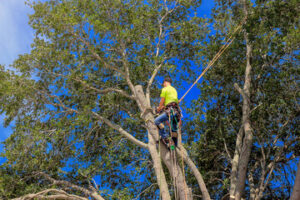Do you have trouble opening or closing your windows? Do you have to take deep breaths near your windows or are they drafty?

Replacement Windows Potomac can help you with all these issues, not to mention add value to your home and boost curb appeal. But it’s important to understand the different parts of a window to minimize confusion when discussing your project with contractors.
If you’re replacing your windows, consider upgrading to ENERGY STAR-rated models. These windows can cut your annual energy expenditures by up to $100 per square foot, depending on your home’s size and consumption. They can also increase your home’s resale value, making it more appealing to potential buyers.
Energy-efficient replacement windows have improved insulation, keeping your home warmer in the winter and cooler in the summer. They can also reduce outside noise, creating a quieter and more peaceful living space. Moreover, if your windows have Low-E coating, they can block harmful UV rays that cause your carpets, furniture and framed photos to fade over time.
Choosing the right replacement windows requires careful consideration of their insulation, performance, and appearance. You should select frames and glass that fit your style preferences and complement the architecture of your home. You should also look for frames that resist deflection and minimize areas of air leakage. Additionally, you should choose replacement windows that are easy to clean and maintain.
The National Fenestration Rating Council (NFRC) and the Energy Star Program set ratings and standards that help you make informed decisions about replacement windows. These ratings are based on the energy efficiency, air leakage, and light transmission of various window types. They can also help you compare the costs of different windows.
When shopping for replacement windows, you should also consider the embodied energy, which refers to the amount of energy that goes into manufacturing your windows. According to an engineer, a typical new window consumes 2.3 million BTUs in production. This amount of energy can take up to four years to recover through energy savings. Furthermore, your replacement windows may contain raw materials that require a lot of energy to extract and manufacture. This is an important factor to consider, as these raw materials have a significant impact on the environment and your carbon footprint. In addition to reducing your energy bills, replacement windows can help you save money on maintenance and repair. Furthermore, they can improve the resale value of your home and protect it from inclement weather.
Aesthetics
The aesthetics of your home play an important role in its appeal, and a well-chosen replacement window can make a significant difference. From the shape of the frame to the color and finish, there are a wide variety of options available to meet the needs of any homeowner. Aside from making a design statement, well-chosen windows can also enhance the architectural integrity of your home.
The most popular type of replacement window is the casement style, which is a great choice for a wide range of home styles and sizes. This window opens outward, allowing for ample ventilation while still offering a view of the outdoors. Other great window options include bay and bow windows, which can transform living spaces into focal points of the home and create a sense of space by letting in more natural light. Additionally, a bay or bow window can be designed to maximize sunlight throughout different times of the day, creating a dynamic ambiance in your living space.
Other types of replacement windows include picture windows, which offer unobstructed views and blend into a wide range of home styles. Double-hung windows and single-hung sidelites can be installed to add more depth to an entryway, while transom windows are a great addition above doors. They can be designed with a Victorian look or sleek, contemporary lines and can be used alone or in a pair to create a balanced appearance.
Another consideration is the material of the frame. Aluminum frames offer a modern, industrial aesthetic and are a good choice for homes with more minimalist designs. Fiberglass frames are a durable option that can be customized with stains and paints to match any color palette. Wood frames add a natural, traditional feel and are ideal for older or more traditional homes.
If you want to take your home’s aesthetic to the next level, consider incorporating decorative elements such as drapery panels or shades, valances, and cornices above your windows. These simple touches can draw attention to specific features of the window and elevate your home’s overall aesthetic.
Durability
The type of material used to manufacture replacement windows is an important factor in determining how long they will last. Different materials have their own unique characteristics and average lifespans, which are impacted by a variety of factors.
Frame material is one of the most impactful aspects that can affect a window’s durability and lifespan. Vinyl windows, for example, are a popular choice because they are resistant to moisture and will not warp or swell like wood does. They also require less maintenance than wood or aluminum. Additionally, vinyl windows are available in a variety of colors and finishes, which means they can match the aesthetic of any home.
Other factors that can impact a replacement window’s longevity include the installation method, frequency of use, and climate conditions. A qualified professional can ensure your new windows are properly installed to protect against water leaks, air drafts, and other issues that may shorten their lifespan.
In addition to helping keep your home energy efficient, replacement windows can improve safety in your home. This is because new windows are often crafted with tempered glass, which means they won’t shatter into sharp, jagged shards in the event of a break or accidental impact. In addition, some windows are equipped with incorporated locks and sensors that can help to keep intruders out of your home.
Another way that replacement windows can enhance safety in your home is by reducing outside noise levels. Using new, insulated glass can help to cut down on noise pollution from the street and other areas in your neighborhood. This can give your family a quiet and comfortable space where they can relax.
Safety
New replacement windows will enhance your home’s security and safety. Unlike older windows that are prone to warping or sticking shut, newer models have secure locks and sashes that are much more difficult to break open with force. This minimizes the risk of burglaries and other intruders attempting to enter your home, as well as potential injuries from broken glass inside your home.
Modern windows also often feature better sealing and soundproofing materials, reducing outside noise and creating a quieter living space. Additionally, some window types come with UV-blocking coatings to help keep interiors protected from damaging ultraviolet rays that fade furniture, flooring, and decor over time.
When choosing replacement windows, look for styles that make it easy to clean the exterior and interior surfaces of your window from the comfort of inside your home. Many Renewal by Andersen windows offer tilt-in sashes that allow for easy cleaning of your glass and frames from inside the house, eliminating the need to climb on ladders or call in professionals to reach hard-to-reach spots.
Replacing old windows with new ones will also increase your home’s value, as potential buyers will likely be more interested in a house that appears cared for and updated. A new replacement window will give your home a fresher, more attractive appearance and provide added comfort in your living spaces.
Replacing old, flimsy windows with new ones will also improve your family’s health by allowing you to easily open them and let in fresh air. In addition, letting in fresh air helps reduce indoor pollutants like harmful gases, dust, and odors that can build up over time. This is important for optimal health, especially if you have children or elderly adults in the home who may be prone to respiratory illnesses. This is also a great way to eliminate mold and mildew, which can be a serious threat to your family’s health.

